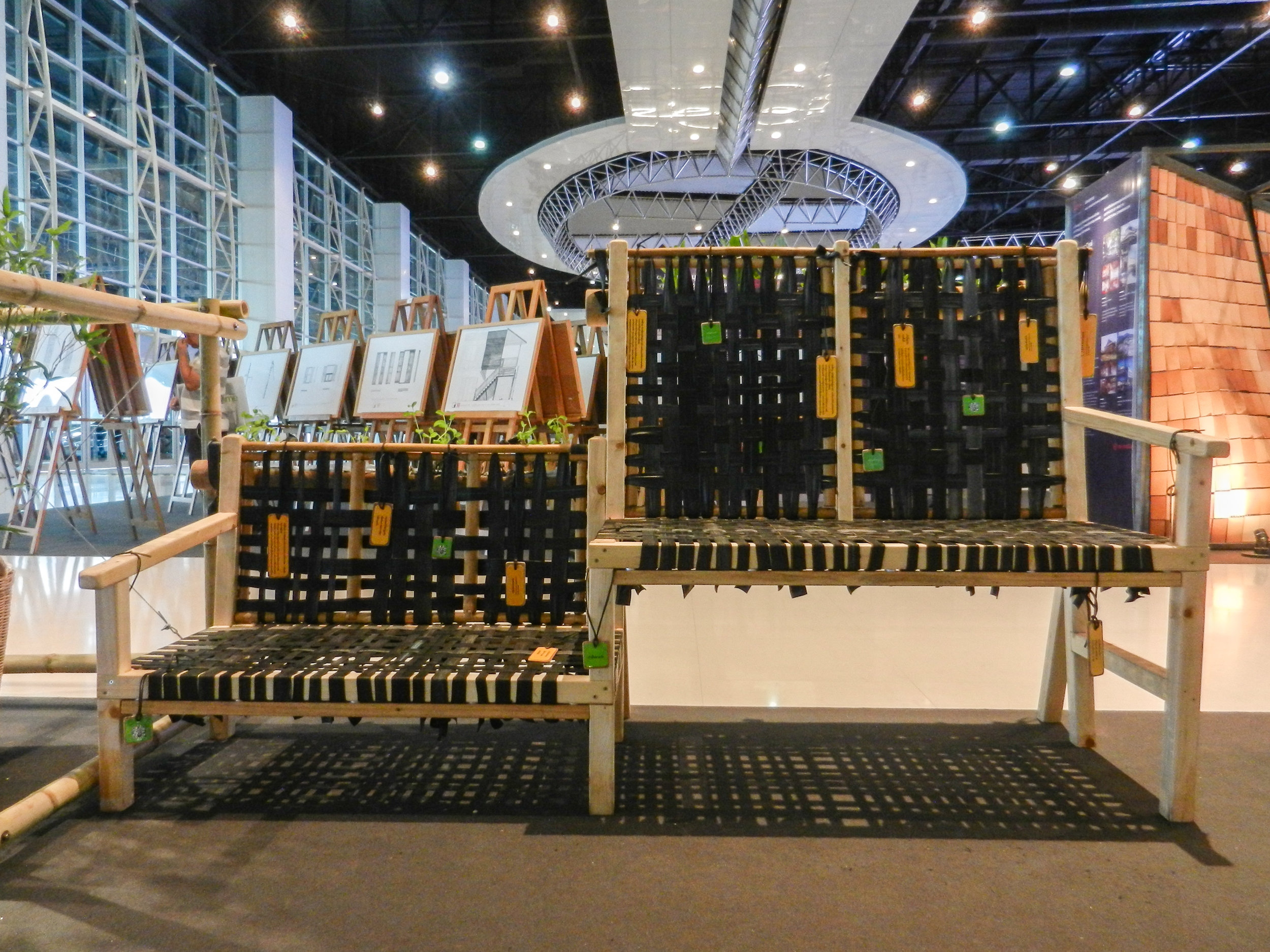Project name: Openspace’s Two-Level Bench: A piece for the “Beyond Ordinary” Architect Expo ’18
Funder/Sponsor: ASA CAN
Year: 2018
Project type: Design and Construction; Knowledge Management
Background
Organised by the Association of Siamese Architects under Royal Patronage (ASA), ASA Expo is the biggest architecture and building technology fair in the ASEAN and takes place in Bangkok on an annual basis.
This year’s theme for the “Beyond Ordinary” Architect Expo ’18 was “Vernacular Living” and invited participants to explore how it can respond to ongoing trends like globalisation, urbanisation and climate change.
ASA CAN 2018
Within the ASA Expo, the Community Architects Network (CAN) curated a booth focused on shared living spaces, and how people co-exist with technology, nature and one another. The structure – entirely made of bamboo – encouraged socialising and sharing physical space, and had distinct natural elements, like bamboo and other plants.
Openspace exhibited its signature two-level bench within the CAN booth. The bench supports inter-generational socialisation, wellness and nature preservation, through some of its distinct features:
It has two levels, one lower than the other. This comes back to a traditional belief in Thai society that children need to sit at a lower level than older people, to show them respect. This bench thus invites children and elderly people to sit together
The higher level is high enough to allow for elderly people to swing their legs. This simple exercise can improve vitality and overall health
The weaving uses discarded bike tyres, which offers two benefits:
upscaling promotes the idea of reusing materials in an environmentally conscious way;
using readily available and cheap materials allows poor communities to repair the piece without incurring a high cost
The tyres also allow for a soft back, which is preferred by elderly people
The structure uses bamboo, another cheap material for poor communities, that is not commonly used in a “poor” setting. In fact, bamboo is often used in details of high end designs, and gives a beautiful finished look
The back of the bench is fitted with larger bamboo stems which has been turned into a planter for flowers, plants or herbs
This furniture piece was first designed during a participatory design workshop in 2010, and we have used it for a few of our urban poor projects since. That means that we have been developing this piece for over 8 years now, to reach its current design.
Through our various projects, we have found this furniture piece to be extremely popular and well suited to communities, as there tend to be many elderly people and young children. The bench acts as a physical element in the community that encourages people of all ages to come together and hang out with one another; this is particularly good for elderly people, both for their physical and mental health.
We have also found that community members are intrigued by the way the bench looks and are eager to test it. The simplicity in the design and the “put together” detailing encourages community members to take ownership of the piece, have it in their community and fix it by themselves when anything breaks. At Openspace, this is what we consider as a truly sustainable piece of furniture, appropriate for many different communities.


























